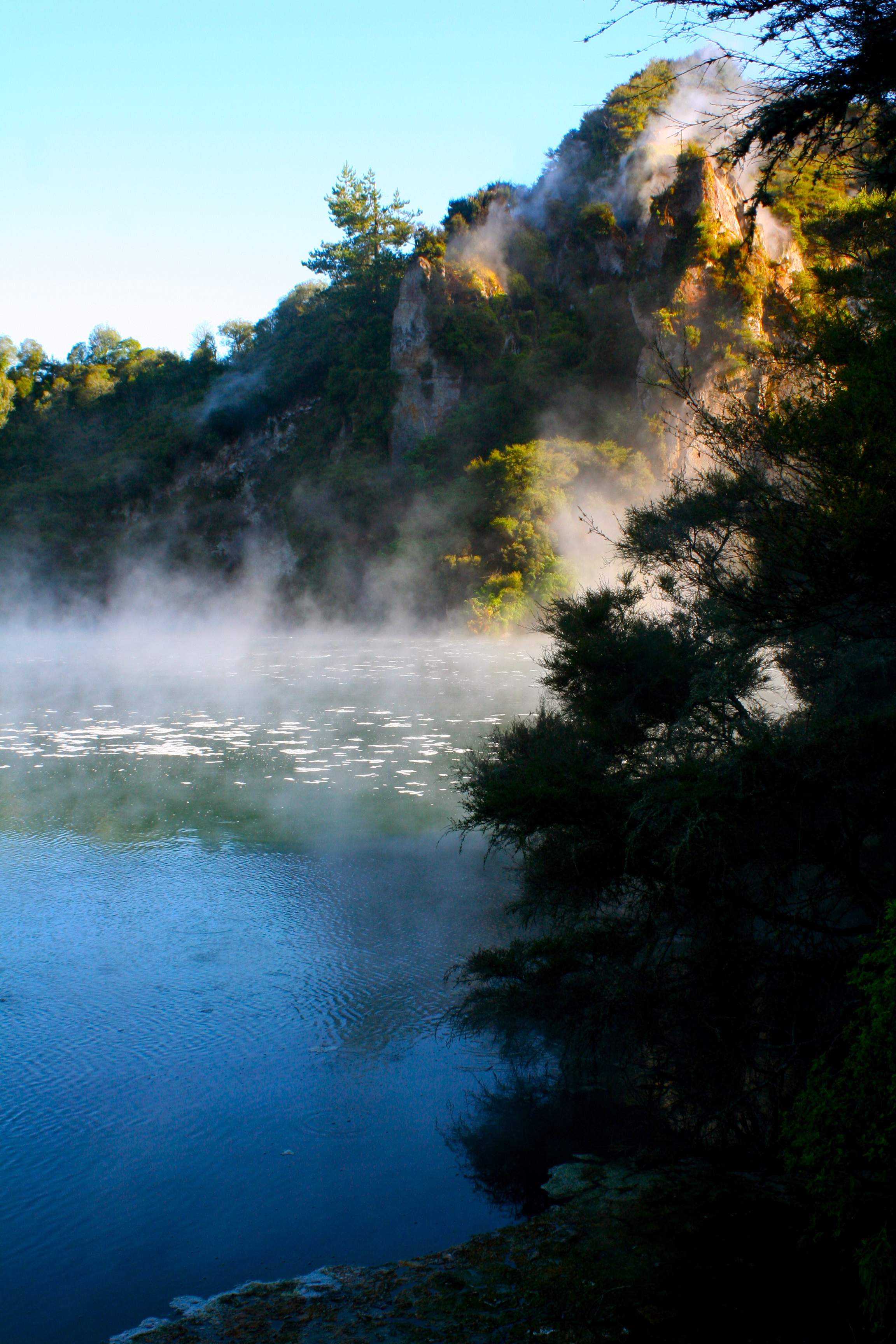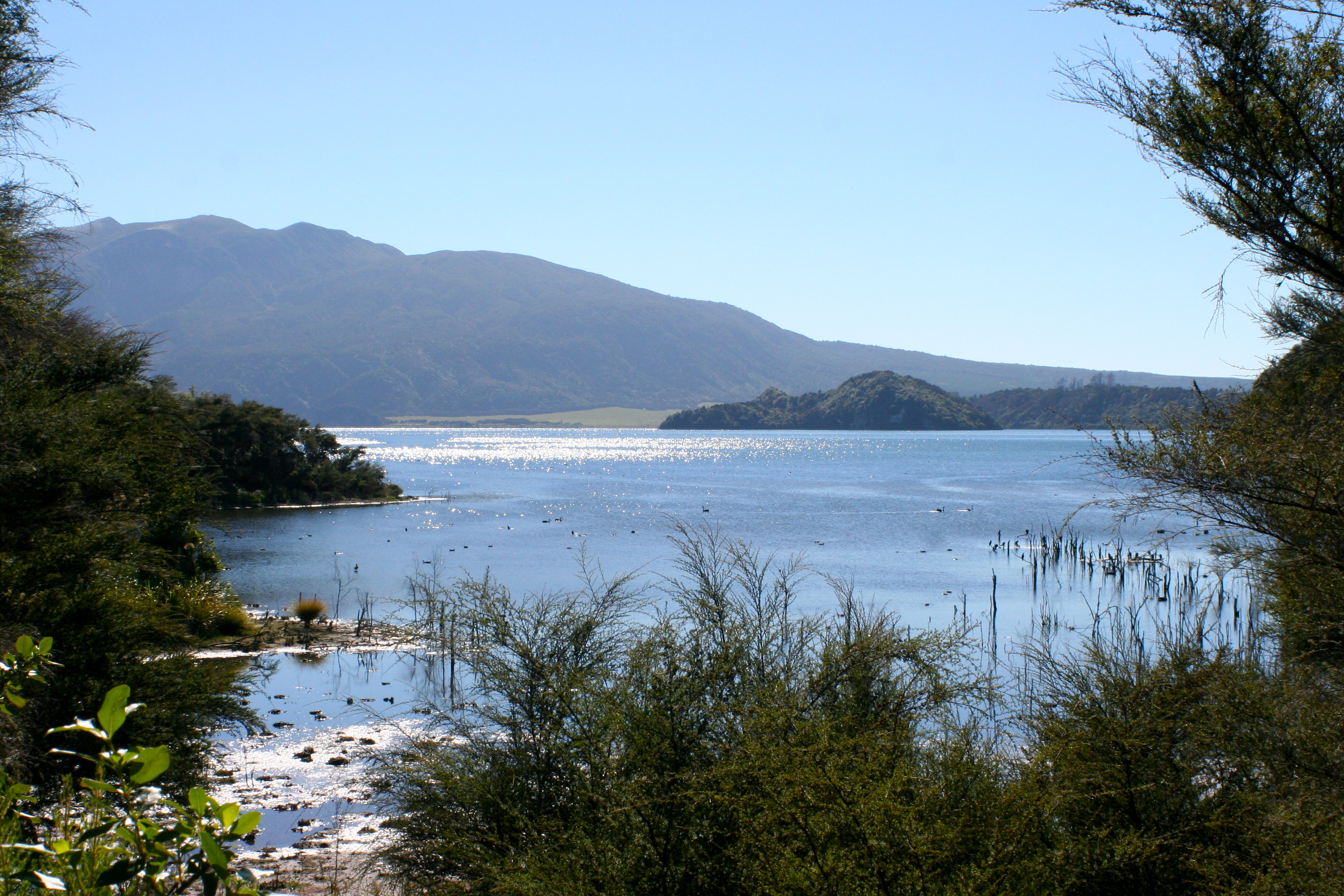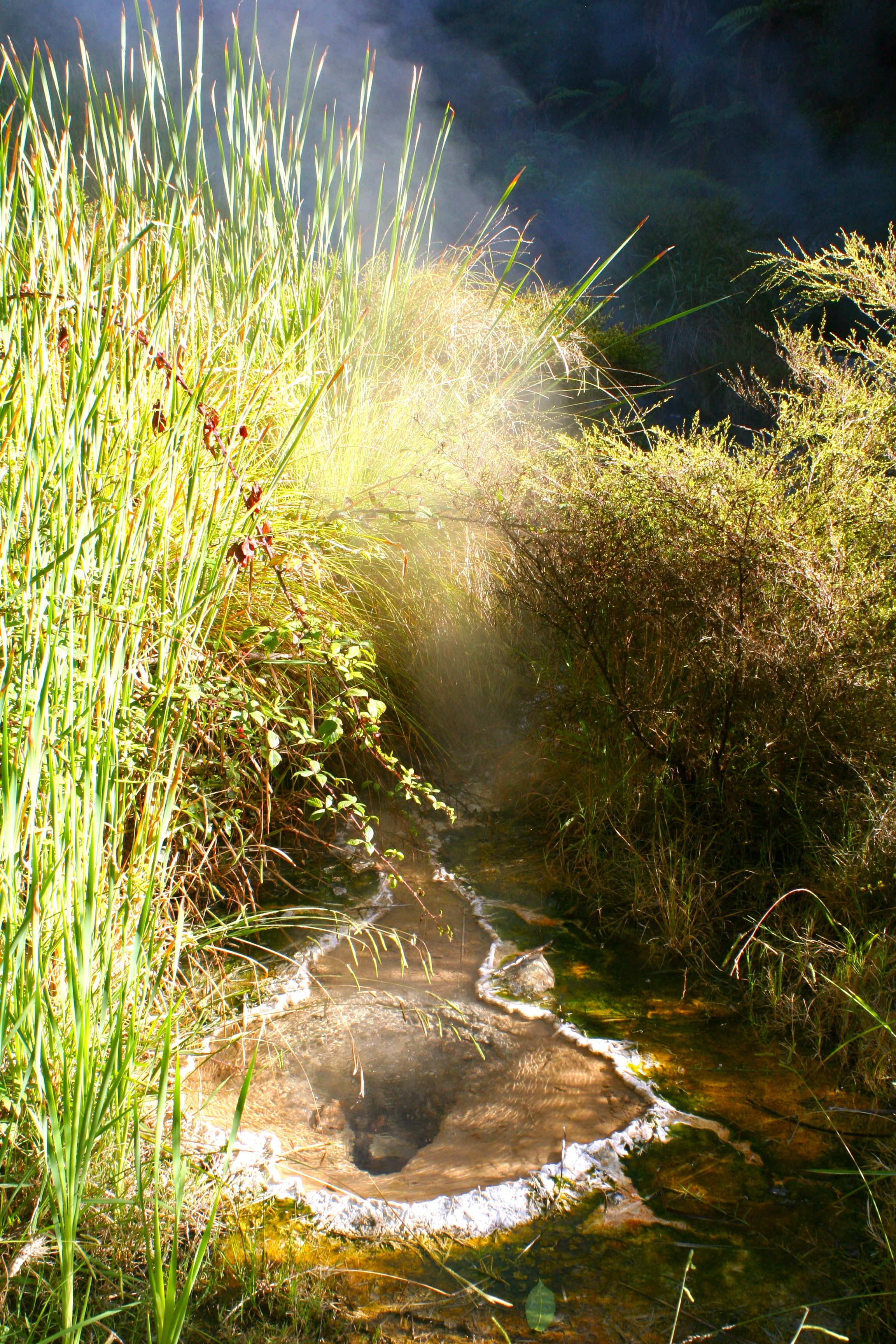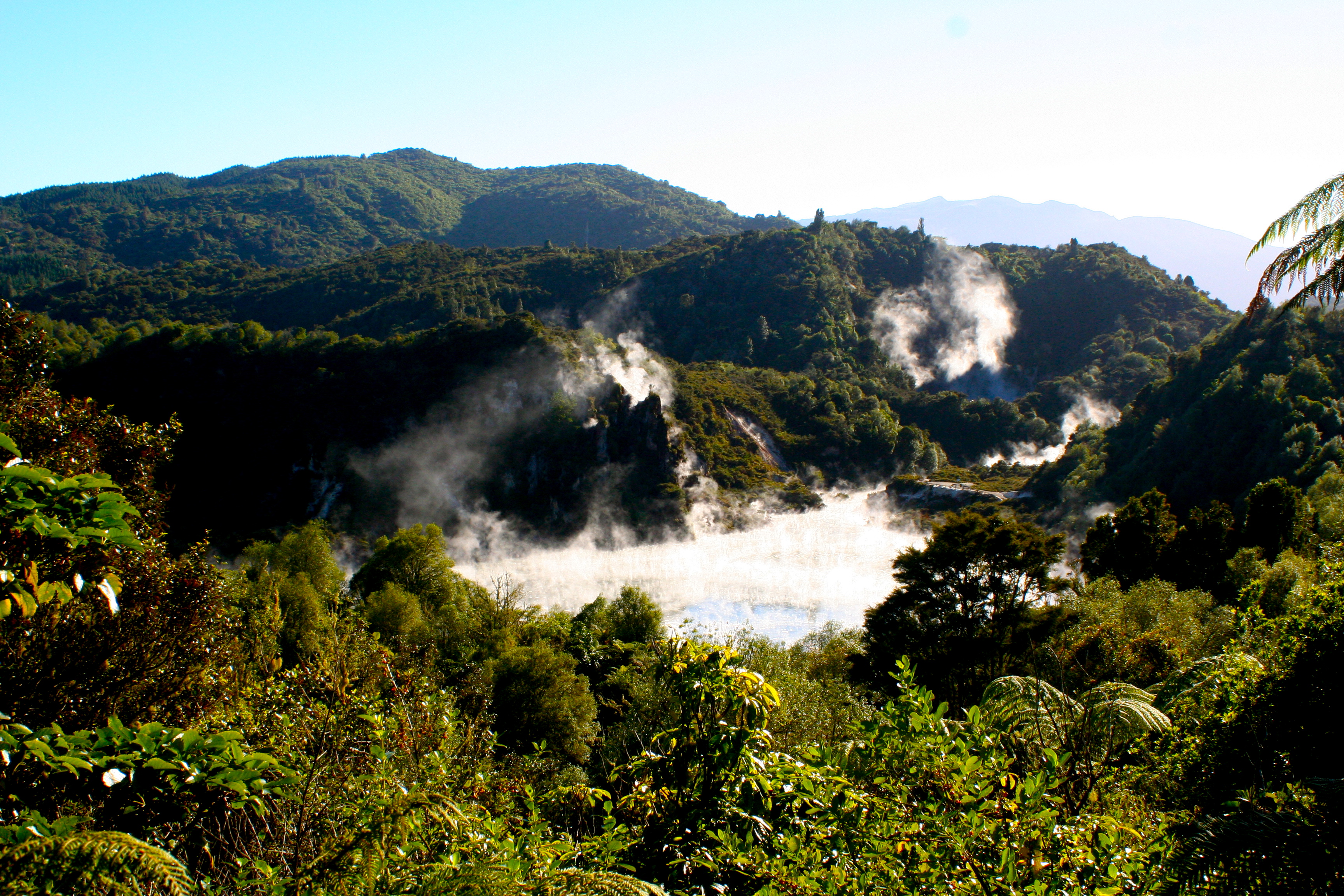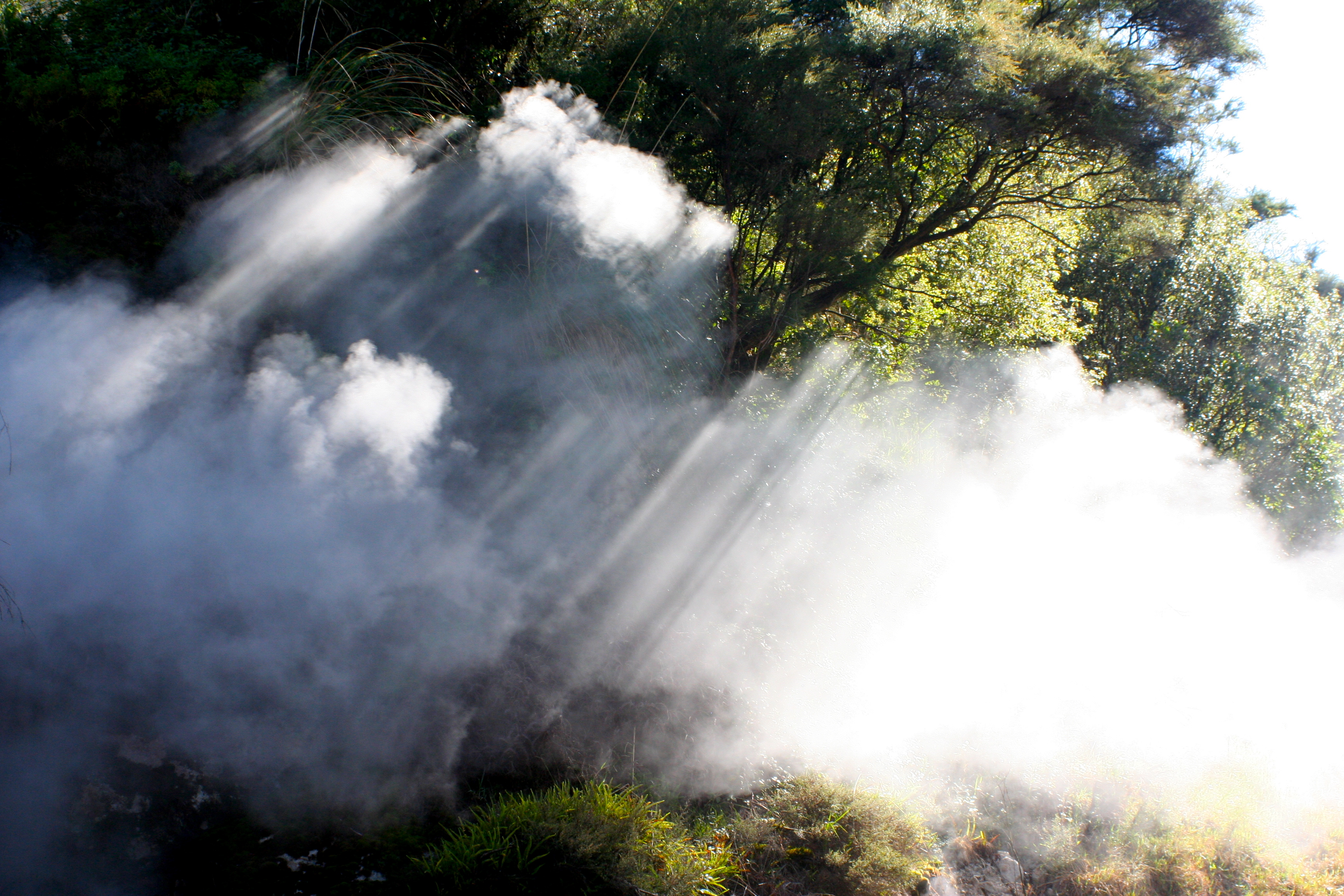In the valleys of southwest Iceland, the Great Geysir is part of a system of hot springs that, in addition to spewing boiling water some seventy meters into the air, have lent their name to the English word for ‘geyser.’ The word ‘geysir’ itself comes from the Old Norse verb geysa, to “gush” or “rush forth.” Say it out loud…you can almost just hear an expedition of vikings stumbling upon one and raising their swords with a shout: geysa!
Similarly, the word ‘spa’ originates from the municipality of Spa, Belgium – coincidentally the fictional hometown of Agatha Christie’s famed protagonist, Hercule Poirot. As early as the 14th century, the town’s hot springs have attracted visitors for their supposed healing and restorative powers.
And while there isn’t anything particularly remarkable about New Zealand’s etymological contribution to the geothermal world, the Waimangu Volcanic Valley just thirty minutes outside Rotorua is unique in its own right – as the world’s youngest geothermal system. The tenth of June, 1886, holds little, if any, significance to many in the world, yet it marks the eruption of Mount Tarawera, the largest in the country’s history. Ash could apparently be seen as far away as Christchurch and residents of Auckland, it is said, mistook the sights and sounds of the eruption for an attack by Russian warships.
(Little known fact: the Crimean War left young, defenseless New Zealand of the 1870s increasingly paranoid.)
Russo-invasion threats aside, the reality of the eruption was that it dramatically altered the landscape of the valley.
Lake Rotomahana exploded to twenty times its original size and a ten mile rift in the earth opened up, forming what is now called the Waimangu Valley, waimangu meaning “black water” in Maori.
As a welcome sign explained at the start of the park, Waimangu is important in the fact that it is “the only hydrothermal system in the World where the exact day of the start of surface activity is known.” Despite the presence of hot springs throughout the world, on every continent – yes, that includes Antarctica’s Deception Island – under the ocean and even on Jupiter’s sixth moon, Europa, Waimangu stands alone.
As I began the two-hour walk through the valley, the landscape looked like much that I had grown used to seeing around the country – the towering kanuka trees, the fans of ferns and moss-covered rocks – but then again, that in itself was remarkable. All life in the region was wiped out by the eruption in an eerie Biblical flood kind of way – every plant, every animal, every bird – so the fact that the bio-system has rejuvenated itself without any outside encouragement or assistance makes it the only one of its kind.
The very names given to the features of the land suggest an instability about it – Inferno Crater, Frying Pan Lake, Rift Valley.
The perspective lent from panoramic vistas is that of a quiet unrest, with sulfuric steam rising from very nook and cranny as if a dragon lurks beneath the hills. I thought of bus rides to elementary school on cold winter mornings, where mist would lift off the surface of a pond near my home, its water warmer than the air above. And yet places like Emerald Pool, Fairy Crater and the Crystal Wall hint at a whimsical side to the region; that as the waters have cooled and the mountains settled, Waimangu got a second chance at life.
The worst of the destruction over with, it’s as if the creative forces have come out to play, imbuing the crater pools with the deep blue of a peacock’s tail and forming delicate, quartz-like crystals out of sulfur and sulphates. Even the sunlight streaming through the steam spoke of fairy tales.
I had arrived early that morning, almost as soon as the doors were open at half past eight. An early start had been my sole intention, this seeming like the best place to start working my way through a full day’s agenda, but I had unintentionally made the best timing decision of my life.
For what seemed like ages, I was the only person on the trail, the silence augmenting the intrigue of bubbling springs and hissing steam vents. But somewhere past the second of three bus stops, I started bumping into a group of about ten French tourists who were hardly louder than the stillness of the air itself. They were older, dressed in trendy fitness gear and appeared considerably fitter than myself. At the end of the one-way trail, we caught the bus back together to the visitors’ center.
What awaited us felt like walking into a mall on the day after Thanksgiving having just spent a quiet morning in the park. People – oh, the people! – were everywhere. Worse yet were the masses of school groups, all heading down the trail at once, high schoolers with their uniforms and cell phones and hipster mentalities. I stared down the trail as they headed out, the one that two hours earlier I’d had entirely to myself, imagining the state of my sanity if I’d overslept and only just arrived.
Walking past rows of parked buses, I slipped into my car with that sigh of relief often felt after swerving to miss a near-tragedy of a car accident.
Waimangu may be known as “New Zealand’s most devastating natural event,” but for now, for me, it was disaster averted.
